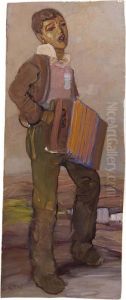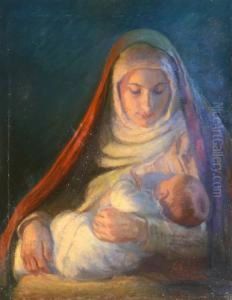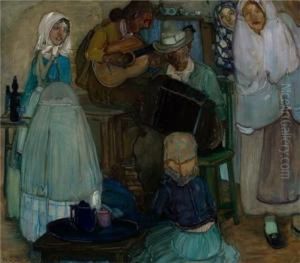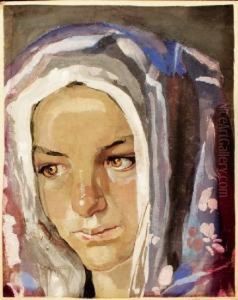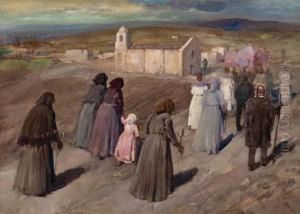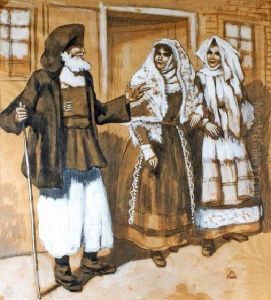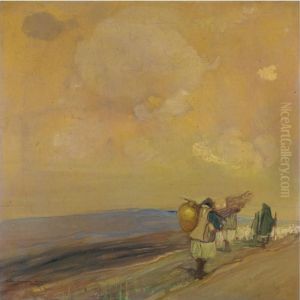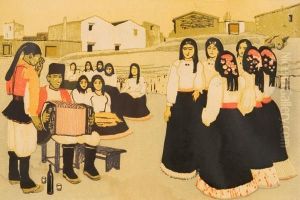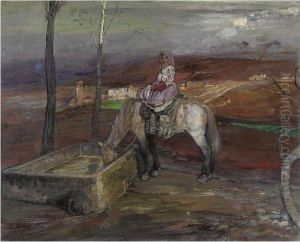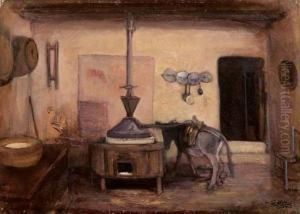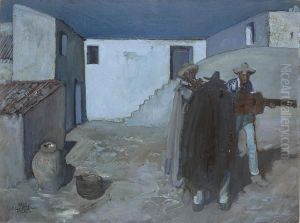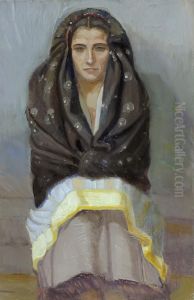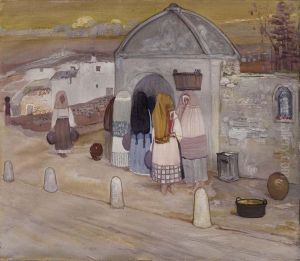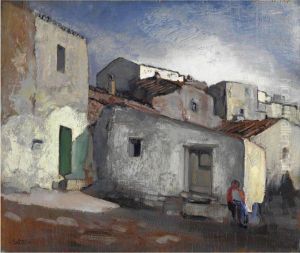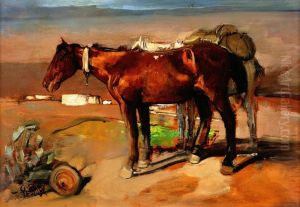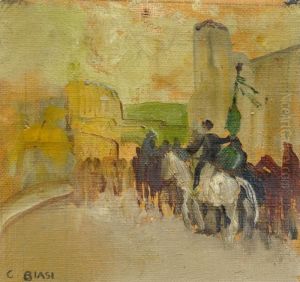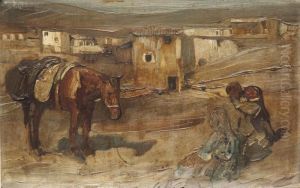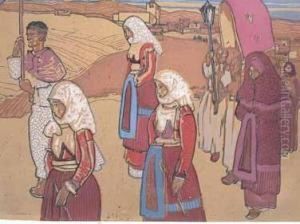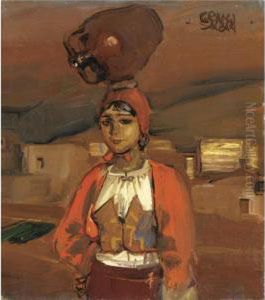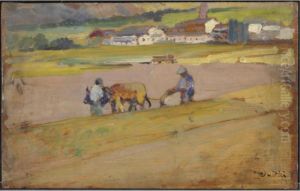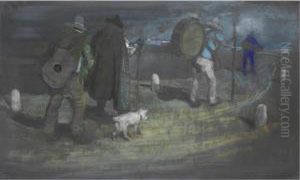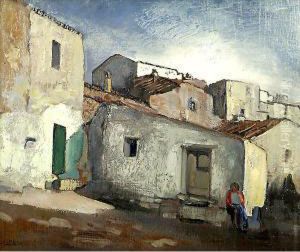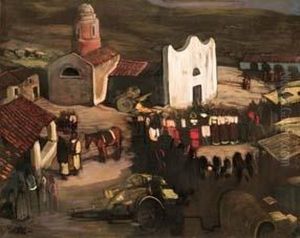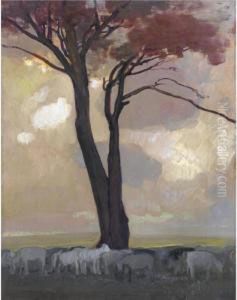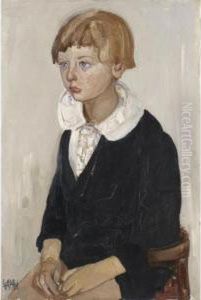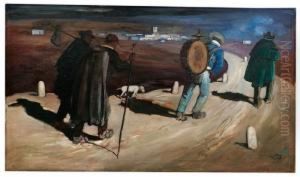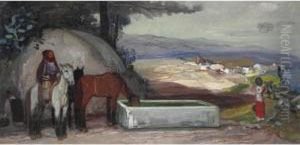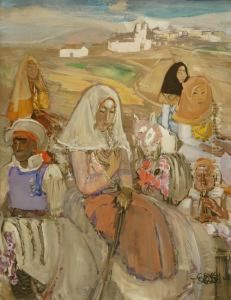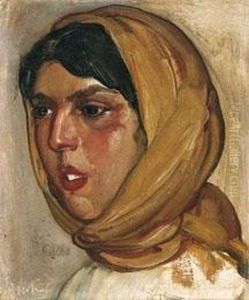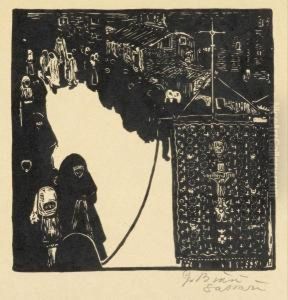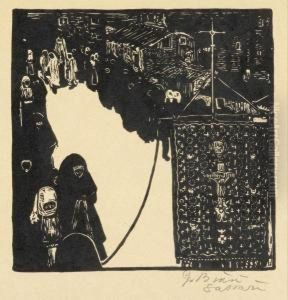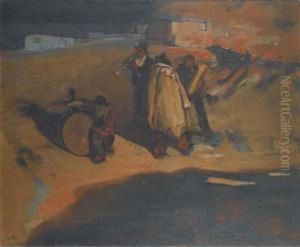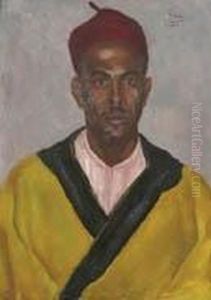Giuseppe Biasi Da Teulada Paintings
Giuseppe Biasi was an Italian painter, illustrator, and ethnographer, born in Sassari, Sardinia in 1885. He is considered one of the most important Sardinian artists of the 20th century. Biasi showed an early talent for art and studied at the Academy of Fine Arts in Rome. His work was heavily influenced by his Sardinian heritage, and he is renowned for his landscapes and scenes of rural life in Sardinia, as well as for his participation in the 'Costumbrismo' movement, which focused on the depiction of local customs, manners, and traditions.
Biasi's work was not limited to painting; he was also an accomplished illustrator and writer. He was deeply interested in Sardinian folklore and traditions, which he documented through his art and writing. During his lifetime, he traveled extensively throughout Sardinia, collecting stories, folklore, and studying the island's diverse cultural practices. His ethnographic work is considered an invaluable contribution to the understanding of Sardinian culture and history.
During World War I, Giuseppe Biasi served in the Italian military, and his experiences during the war influenced his later work. After the war, his art became more introspective and symbolist in nature. Biasi was also involved in the Sardinian autonomy movement, which sought to preserve the island's cultural identity and political independence.
Giuseppe Biasi's contribution to art was cut short when he died in Rome in 1945. Despite his relatively short life, his work left a lasting impact on Italian and Sardinian art. Today, his paintings are held in high regard and can be found in museums, galleries, and private collections. They serve as a poignant reminder of Sardinia's rich cultural heritage and the talent of one of its most celebrated artists.
